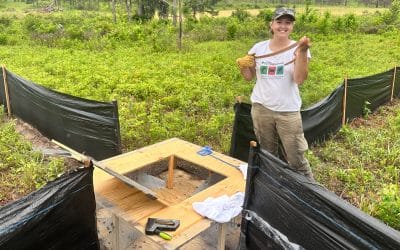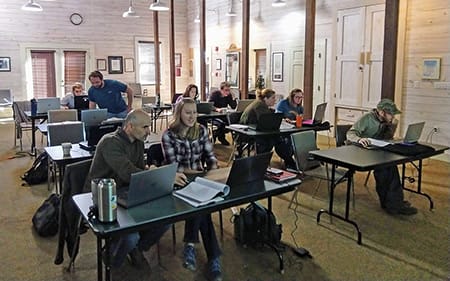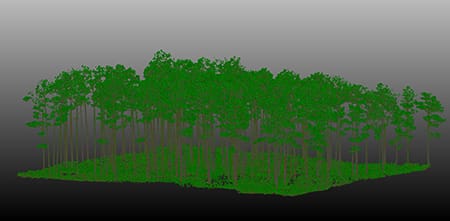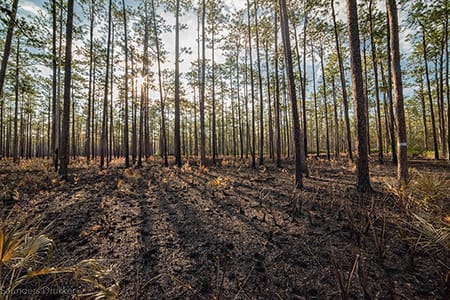Have you ever stopped to think about just how many kinds of food there are at the grocery store? With a thousand items to choose from, perhaps you pick based on the color of the box, the brand you trust, or maybe a sale caught your eye. Whether we grab an apple or popcorn, these choices have consequences for our health. The same holds true for wildlife, except they do not have the luxury of a fully stocked store. Consequently, a species’ food choice sheds light on foraging habitat requirements and can thus inform how land managers can best protect them.
For the federally threatened red-cockaded woodpecker, a common prey item is the acrobat ant. These 2 mm long ants are named after their arboreal nature, commonly occupying pine trees and forming colonies of about 20,000 ants. The woodpecker is so frequently observed consuming these and other ant species that one paper suggested the birds are ‘ant-specialists’. This led Tall Timbers researchers Robert Meyer and Breanne Ward to wonder if the red-cockaded woodpeckers were instead opportunistically feasting on the abundantly available, but questionably nutritional, prey item while they searched for other more substantial snacks, like a spider or cockroach.
To explore the woodpecker’s ant-eating habits, the researchers observed the foraging behavior of the birds and tested whether they visited trees occupied by acrobat ant colonies more frequently than those without them.

For the federally threatened red-cockaded woodpecker, a common prey item is the acrobat ant.
What they found in a recent paper published in the Wilson Journal of Ornithology was that the woodpeckers did not select trees with ants more than any other tree in the forest. The birds in fact foraged on pines regardless of whether ants were detected on them or not. Moreover, the woodpeckers spent about 2 minutes on trees with ants but 30-60 minutes on recently lightning-struck trees and green pine cones, places that frequently host bark beetles and caterpillars. The disproportionate effort may indicate that the woodpeckers actually prefer prey items other than ants.
Red-cockaded woodpeckers may not prefer trees with ants but they still eat them in abundance. This begs the question: is the ant nutritious or are we watching our threatened woodpecker gorge itself on junk food?
Research from entomologist, Dr. Walter Tschinkel, suggests the ants are not calorically worthwhile for the woodpeckers; in fact, they would likely need to eat hundreds or thousands of these ants per day to survive. It would be like a person trying to survive on popcorn. Sure, it’s possible, but it’s not ideal.
Thanks to this research, we have a more nuanced view of the diet of an at-risk species of our southeastern pine forests. Ants are a dominant species occupying the pines and are likely to be eaten by the red-cockaded woodpeckers. However, the ants are but one part of their more complex diet. By challenging the notion of red-cockaded woodpeckers as ant-specialists, the researchers offer further evidence of the importance of both live and lightning-struck trees for supporting the foods they need. Afterall, everyone loves variety.

















